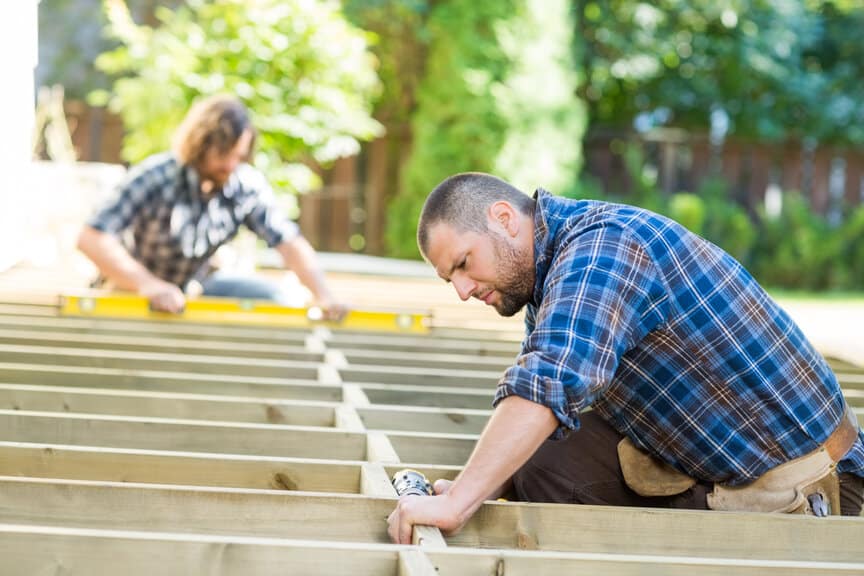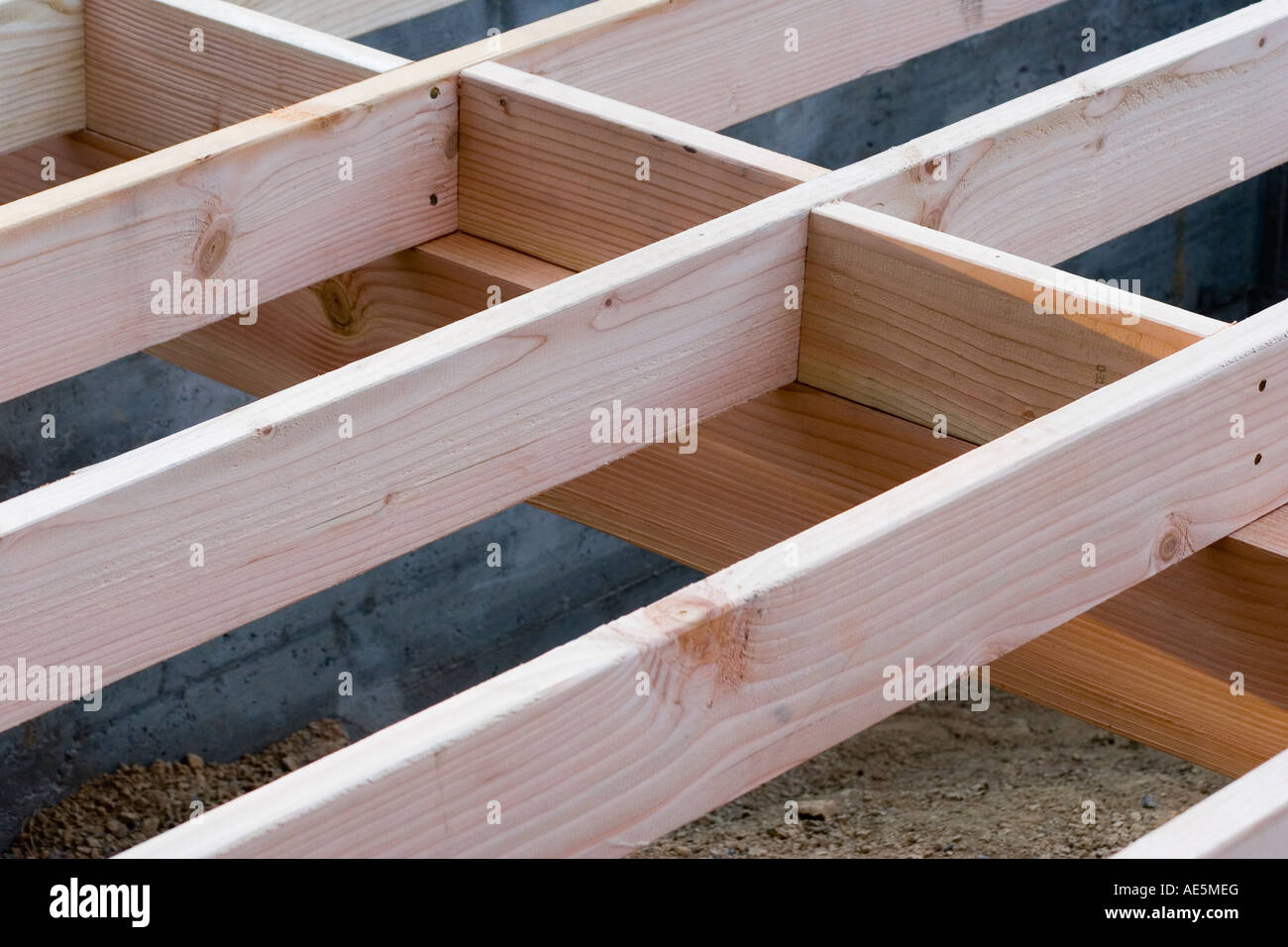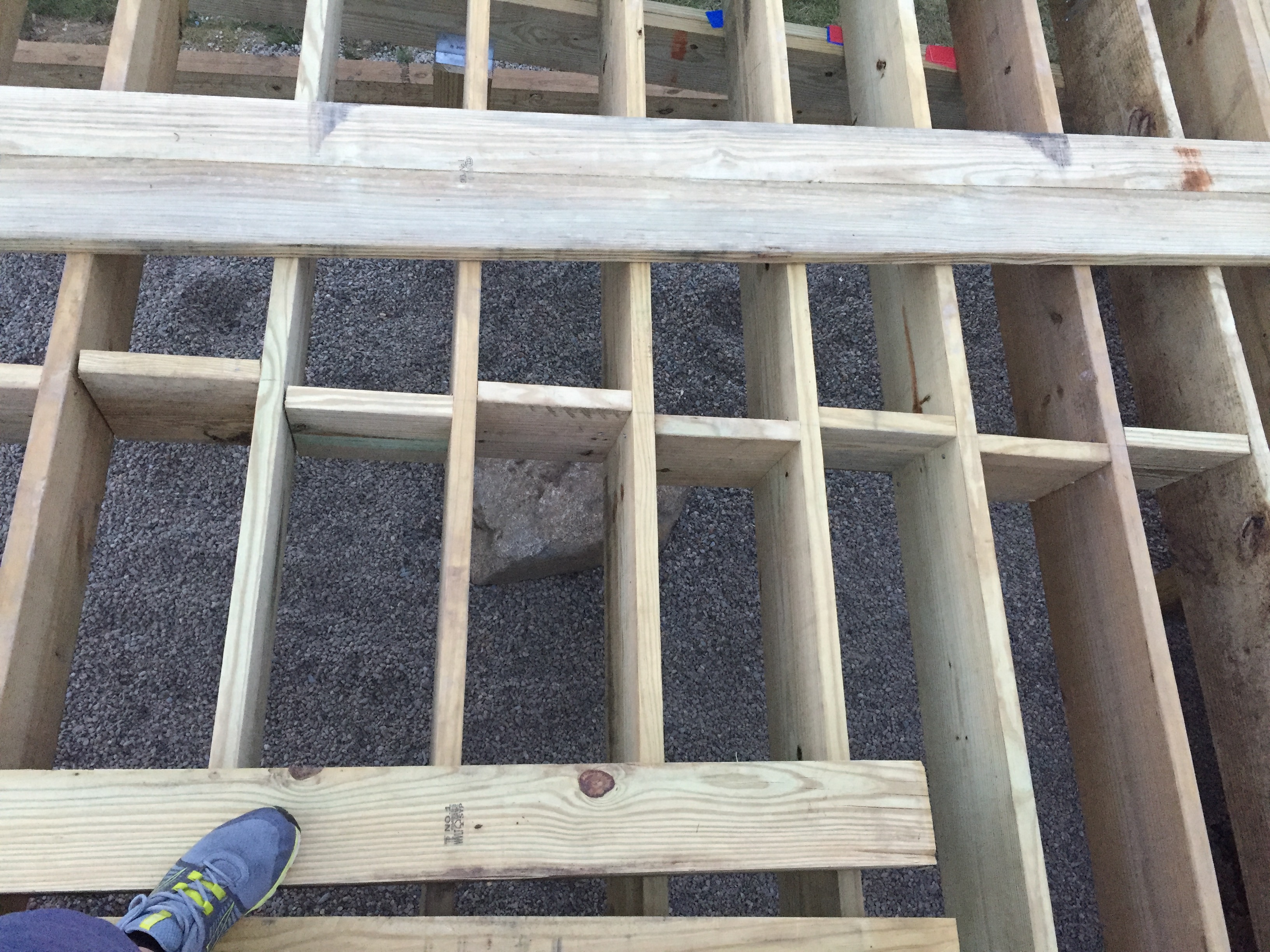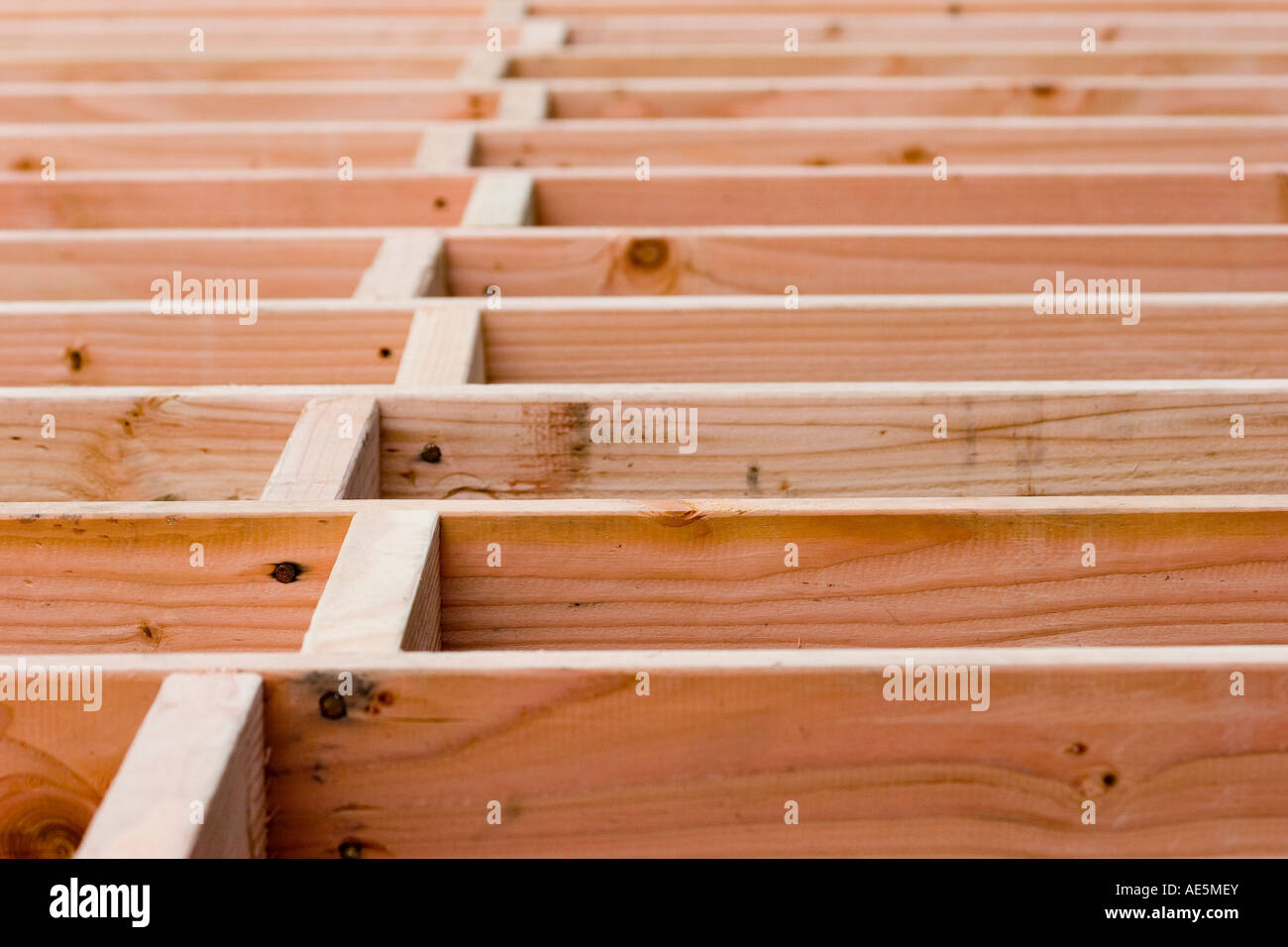
Tji Floor Joist Blocking Review Home Co
Floor joist blocking and bridging are methods to solidify a floor structure. Reinforcing connections are installed between joists to correct the bounce and wobble of a flooring system. Blocking and bridging creates a better weight distribution among all the joists and reduce the pressure on the joist. What is Floor Joist Blocking?

Blocking Between Floor Joist Can Keep Plumbing in Walls Just Might
There are a couple of different methods for blocking your joists with solid lumber: alternating and doing it in a straight line. Ideally, you can block in a straight line, as this provides slightly more stability as the load transfer from the floor above is directed most efficiently through blocking in a straight line. Straight Line

Blocking Floor Joists Off Grid Cabin Build 13 YouTube
Wood Framing Blocking, Bridging, Cross-Bracing, Strongbacks. Bracing between roof trusses and between longer-length solid wood floor joists as well as between I-joists is required to improve roof or floor structural stiffness and also to keep framing members spaced at proper intervals. IRC R502. 7.1 requires blocking for joists longer than 12.

How To Install Floor Joist Blocking In Revit Viewfloor.co
6 Ways to Stiffen a Bouncy Floor Solid options for reducing joist deflection include added blocking, sistered joists, built-up beams, and more. By Mike Guertin, David Grandpré Issue 184 Synopsis: Bouncy floors are one of the most vexing problems faced in houses, both new and old.

Blocking between floor joists running across girder resting on the
In terms of floor joists, blocking is installed at 90-degree angles between, and level to, the floor joists. It provides lateral strength and better weight distribution for the load on the floor, and helps compensate for twisting or warping in the joist boards. Blocking can help fix or prevent bouncy and squeaky floors and keeps joists plumb.

800JB16 8" FLOOR JOIST BLOCKING 16" O.C. Clarkwestern Dietrich
6: By Blocking Of Floor Joists. Floor joists are the supporting beams that run horizontally across a flooring frame. They provide essential structural support and allow proper flooring movement above them. If you find that your floor is beginning to sag or wobble, it might be time to block these joists using one of the various blocking methods.

Floor Joist Blocking Carpet Vidalondon
Blocking panels are used for lateral restraint of the joist (to keep the ends moving from side to side), to transfer load from above around the joist or for shear wall nailing from above. Squash blocks are used to transfer load from above around the joist.

Ontario Building Code Floor Joist Blocking Viewfloor.co
Here are three steps for joist blocking. Read on to learn how to install blocking between joints. Making "Professional" Blocks To make the blocks, I cut sections of I-joist 1½ inches smaller than the space between the joists, then nail a scrap of ¾-inch subfloor material to each end of the block [1]. This creates two large nailing fins.

Wood blocking in a staggered pattern between floor joists at a
For these applications blocking has three major functions: To provide lateral support to the floor joists - to prevent them from physically "rolling over" due to lateral loads. This is accomplished by the shape and stiffness of the blocking panel. To provide a means of transferring shear loads from the walls above to the floor/foundation.

Floor Joist Blocking And Bridging Bracing Complete Guide Riset
Then measure the span of the joists (the distance between walls or beams that support the joists). Divide the span by three and add rows of bridging at both of the one-third points. The joists shown here, for example, span 12 ft., so we added rows of bridging 4 ft. from both ends of the span.

Blocking for floors and decks BRANZ Build
For an attic being used as light storage space, you can install 1/2-inch plywood or oriented strand board (OSB) in 4-foot-by-8-foot panels over existing 16-inch joists. For joists spaced 24 inches, use thicker, 3/4-inch plywood to prevent sagging. Floor decking for the subflooring of a living space should be 3/4-inch tongue-and-groove plywood.

Blocking for floors and decks BRANZ Build
The best way to strengthen floor joists from underneath is to make a supporting mid-span beam or wall beneath the wobbling joists. Using jack posts or 6×6 posts and 2×10 or 2×8 beams perpendicular to the joists will solve any wobble and ensure your joists never move again.

Floor Joist Bridging And Strapping Carpet Vidalondon
TradeReady Blocking is pre-cut and formed to fit securely between the floor joists to prevent joist rotation. Pre-punched holes in the connection legs are added for quick attachment to each floor joist. Structural blocking is an economical alternative to TradeReady Structural Bridging (TDSB) or Flat Strapping.

Installing and Blocking Deep Joists YouTube
Floor Framing Part 9 is packed full of special techniques to make your flooring system sturdy. We show you how to make cripples for your rough openings as we.

Blocking And Stabilizing Ideas For 2 x 4 Truss Floor Joists YouTube
Blocking the spaces between joists with smaller pieces of wood can reduce this stress and increase overall stability in the floor framing. A floor frame can have more strength if it is built with engineered wood joists instead of the more common farmed lumber.

Floor joist installation and blocking YouTube
Building code requires the use of blocking for floor joists that exceed 2 inches in width by 12 inches in depth. Blocking also needs to be provided at the supporting end of a joist. In addition to providing lateral support, blocking helps transfer weight to adjacent joists, so that the floor acts as a unified system.